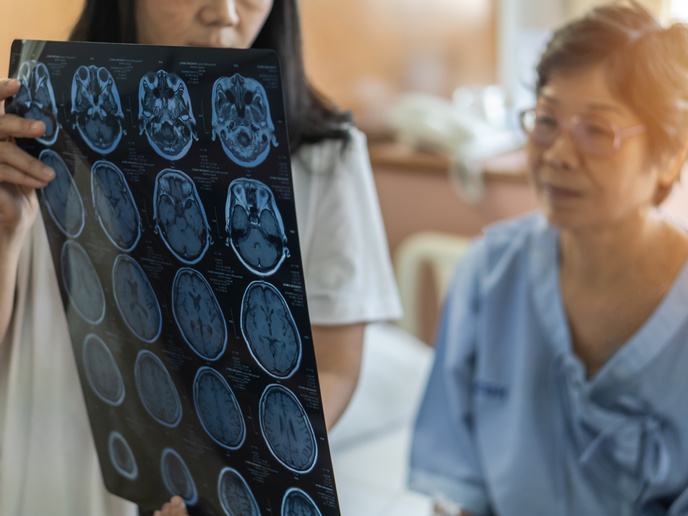New target receptors identified for thrombosis treatment
Heart attacks and strokes are the leading causes of death around the world. Both conditions are caused by thrombosis(opens in new window) – the blockage of arterial blood vessels by small cells in the blood called platelets – which clump together when exposed to an injured or damaged blood vessel. This action helps to prevent bleeding, but the unregulated or inappropriate activation of platelets can lead to cardiovascular disease. Furthermore, cardiovascular disease(opens in new window) can also be caused by thrombus formation in the venous system.
Challenges treating thrombosis
Patients at risk of arterial thrombosis are generally treated with antiplatelet drugs, such as aspirin and P2Y12 blockers (blood thinners). These however are not effective in all patients, and carry a risk of excessive bleeding, because platelet function is suppressed. This can give rise to nuisance bleeds, and in a very small number of cases can be life-threatening. Thrombo-inflammation refers to the interplay of inflammation and coagulation pathways, and can give rise to conditions such as deep vein thrombosis. “Patients at risk of thrombo-inflammation are treated with anticoagulants, such as heparin, but again there is a risk of excessive bleeding,” explains TAPAS(opens in new window) project coordinator Steve Watson from the University of Birmingham(opens in new window) in the United Kingdom. “This is why there is an unmet need for new, powerful antithrombotic drugs that prevent both thrombosis and thrombo-inflammation, but do not cause this excessive bleeding.”
Targeting glycoprotein receptors
The aim of the TAPAS project, which was undertaken with the support of the Marie Skłodowska-Curie Actions(opens in new window) programme, was to identify potential new pathways for treating thrombosis. In particular, the project sought to find new ways of blocking platelet activation by two specific glycoprotein receptors, called GPVI and CLEC-2. “There are currently no drugs to prevent or treat thrombosis that target this class of receptor,” notes Watson. “This is despite the fact that data from mice has shown the critical role that GPVI and CLEC-2 play in driving thrombosis and thrombo-inflammation.” The project brought together 15 early-stage researchers, across four European countries, to focus on this issue. These researchers came from five academic and two non-academic institutions in Germany, the Netherlands, Spain and the United Kingdom. “The approach we took was multi- and interdisciplinary,” explains Watson. “The project involved computational modelling of receptor activation, small molecule drug screening and the generation and characterisation of novel antibodies and related molecules.” Researchers were also able to make use of advanced microscopy to study the mechanisms of receptor activation, test key reagents and develop novel in vitro flow systems that mimic blood flows in humans.
Testing novel reagents
Through this collaborative work, the project team has made significant progress in identifying agents that could block the activation of the two glycoprotein receptors. A new generation of novel reagents, such as the first small ligand of CLEC-2, as well as high-affinity antibodies, have been isolated. Other breakthroughs include a new means of measuring lipids, and an increased understanding of the mechanisms behind receptor activation. Correcting existing data on this issue will lead to more refined assays for drug screening. “Together, this work has contributed to a better understanding of the role of GPVI and CLEC-2 in thrombosis and thrombo-inflammation,” adds Watson. “These findings have provided the basis for further experimental studies.” Indeed, next steps include moving some of the identified reagents to early phase clinical trials in both thrombosis and thrombo-inflammation. “This is a major step, and actually goes beyond the scope of this grant,” says Watson.







